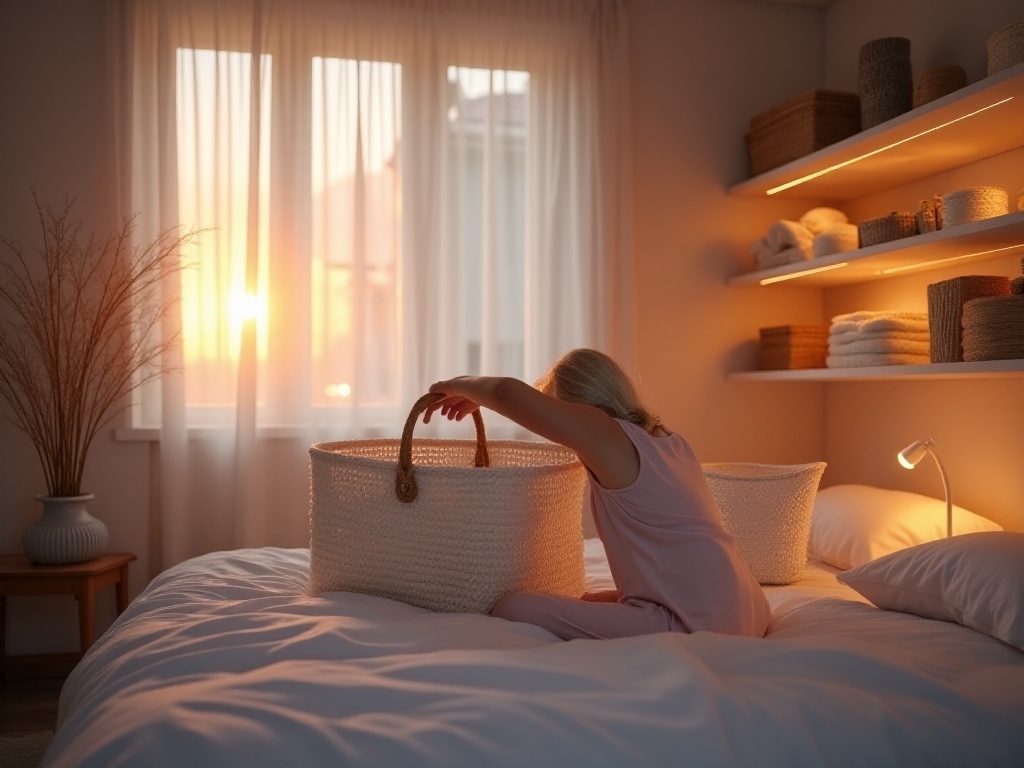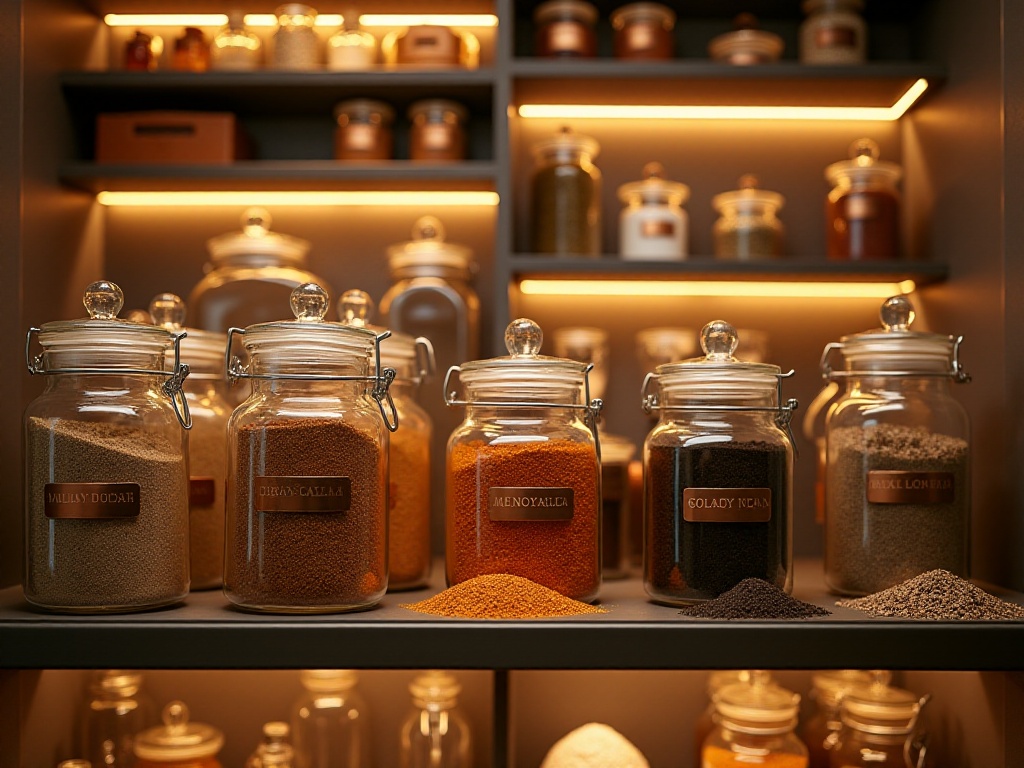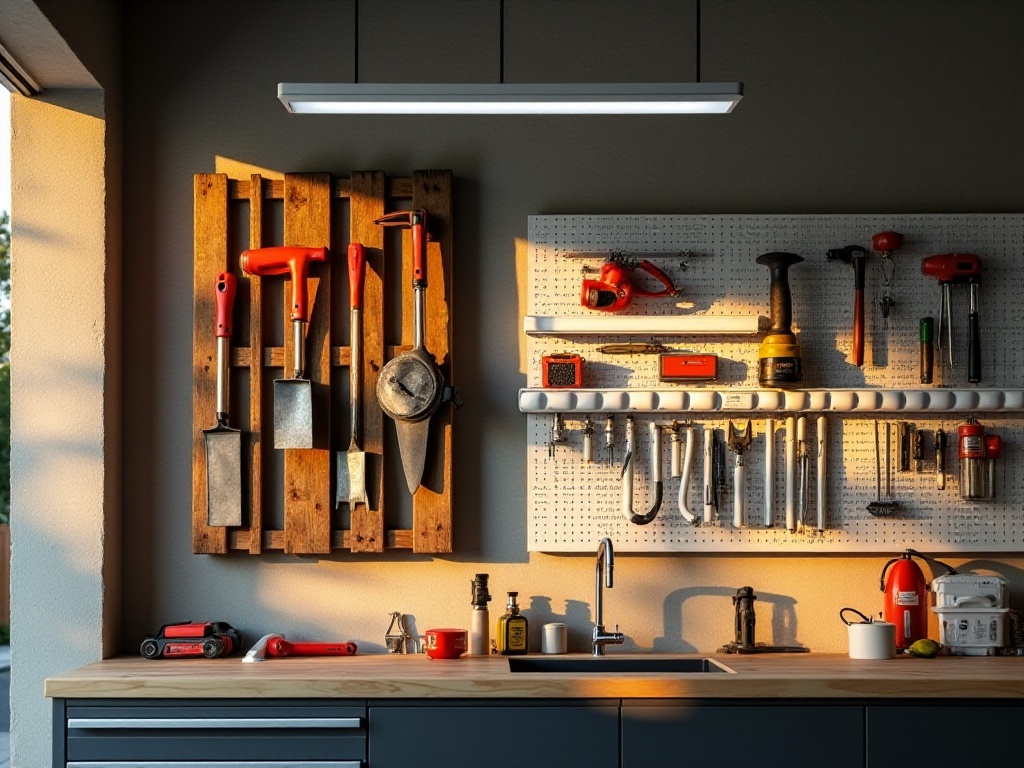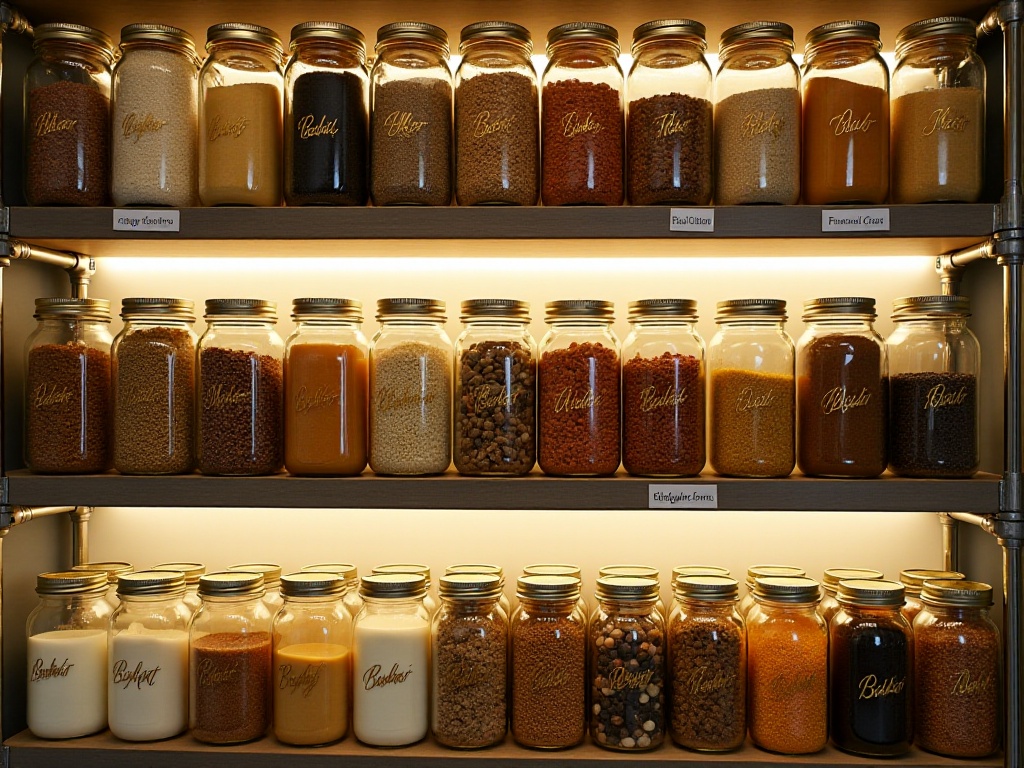The Beginning
I still remember when I first moved into this 40-square-meter little nest - it was quite a scene! On moving day, the delivery guys brought in my boxes one after another until they filled the entire floor. The various cardboard boxes were packed with my clothes, books, cosmetics, and all sorts of miscellaneous items. Standing at the doorway, looking at this chaotic scene, I almost had a breakdown right there.
After finally unpacking all the boxes, even more headaches emerged. Clothes that wouldn't fit in the closet had to pile up on the bed, skincare and makeup products occupied the entire sink counter, leaving no space even for a toothbrush. Books and documents were in an awful state, forming a small mountain on the floor. Every time I needed to find something, I had to turn everything upside down, making the room even messier afterward.
During that period, I was really anxious, always feeling that the apartment was too small and completely inadequate. Coming home every day to such a messy environment would put me in a terrible mood. I started envying friends who lived in bigger homes, thinking they would never have storage problems. But then I realized, even if I moved to a bigger place, without learning proper storage techniques, I'd probably end up in the same situation.
Vertical Thinking
After some research and reflection, I began to realize that the key issue wasn't the size of the apartment but the space utilization rate. I remember visiting a friend's home once and finding that although it was also a small apartment, everything was perfectly organized. What surprised me most was how well she utilized her wall space, which gave me great inspiration.
I took action immediately after returning home, with the first step being installing a wall-mounted clothes drying rack in the bedroom. I found this rack online - it's only palm-sized when folded, taking up virtually no space. When needed, you just pull it down, and you can instantly hang lots of clothes. The best part is that it can handle not just clothes but also large items like sheets and duvet covers. This perfectly solved my previous concerns about drying large items.
The kitchen transformation was also interesting. Originally, my kitchen utensils were stored horizontally in drawers, which not only took up space but also made things hard to find. Later, I bought a utensil storage rack to store spatulas and ladles vertically. The effect was amazing - a drawer that could only hold 3 items before can now accommodate 8 without any problem. Plus, vertical storage makes everything easier to retrieve, no more rummaging around. Just looking at the neatly arranged utensils makes cooking more enjoyable.
I also installed an expandable shelf on the wall specifically for frequently used seasonings and tableware. This makes everything within arm's reach while cooking, which is super convenient. Kitchen tools like spatulas and spoons can be hung under the shelf, making the counter even neater.
I didn't overlook the living room walls either. I installed several shelves that can both display plants for decoration and store small items. The best part is that I carefully planned the heights of these shelves to maximize space utilization without affecting aesthetics.
Even though the bathroom is small, I made good use of its wall space too. I bought a suction-mounted storage rack specifically for shower gel, shampoo, and similar items, with hooks at the bottom for hanging towels. This instantly made the previously cluttered sink counter much tidier.
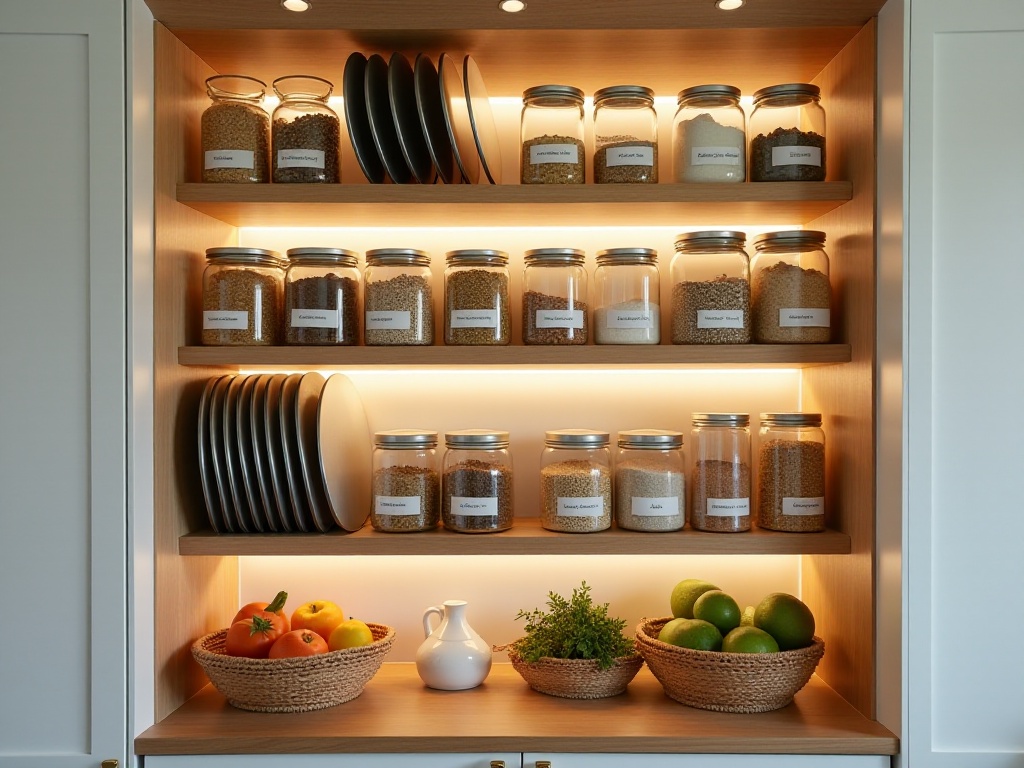
Strategic Zoning
After solving the basic storage issues, I started thinking about how to make storage more organized. Through observation, I realized the biggest problem was that items had no fixed locations, making it difficult to find things when needed. So I decided to learn from library classification methods and make a thorough zoning plan for my home.
First came the closet zoning. I divided the closet into several areas: work clothes, loungewear, and sportswear each got their own zone. I further subdivided each area using storage boxes - for example, work clothes were separated into jackets, pants, skirts, etc. This makes changing clothes super convenient, no more rummaging through everything.
Drawer zoning required the most thought. I bought many storage boxes of different sizes and planned according to item types and frequency of use. Underwear and socks go in the most accessible drawer, skincare and makeup products are arranged in order of use, and stationery items are all properly categorized. After this classification, I discovered I had three identical eyebrow pencils and two bottles of the same toner - all duplicate purchases because I couldn't find the originals.
I didn't waste the space under the bed either. I specifically bought a bed with storage function, featuring huge drawers underneath. These drawers mainly store seasonal clothing and bedding. I labeled each drawer, such as "Spring/Fall Clothes," "Winter Quilts," etc., making it easy to find what I need when seasons change.
Kitchen zoning was also crucial. I divided the kitchen into prep area, cooking area, and storage area. Knives and cutting boards in the prep area are within easy reach, commonly used seasonings and cookware surround the cooking area, and the storage area holds less frequently used utensils and dry goods. This makes the cooking process flow smoothly without any chaos.
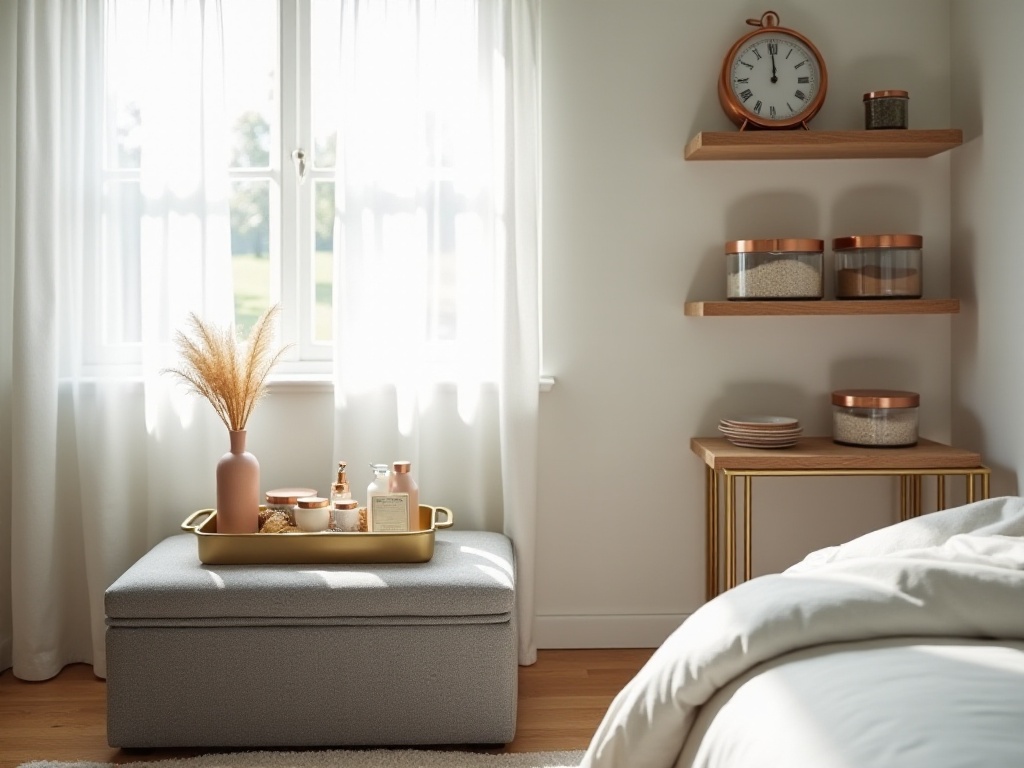
Daily Maintenance
After finally getting everything neat and organized, maintaining it became a new challenge. At first, I would only do major cleanups when the room got very messy, which always took half a day. Later, I found it better to develop a daily storage habit.
Now I spend 10 minutes every night doing storage organization. I fold worn clothes and return them to the closet, put read books back on the shelf, throw away snack packaging and return the remainders to storage boxes. It felt troublesome when I first started this habit, but gradually it became a ritual that actually helps me relax. Plus, waking up to a tidy room instantly improves my mood the next day.
I also set myself a "one-in-one-out" rule. This rule is simple: when adding a new item, I must dispose of an old one. For example, when buying new clothes, I need to eliminate an old piece; when buying new cosmetics, I need to dispose of empty or unwanted ones. This rule not only controls the total amount of items at home but also makes me more rational when shopping.
Last year, following this principle, I sorted out several bags of clothes. Some were given to friends in need, others donated to charity organizations. It felt quite fulfilling seeing these clothes find new value. Most importantly, through this method, my closet always maintains a relatively fixed capacity, never getting overstuffed.
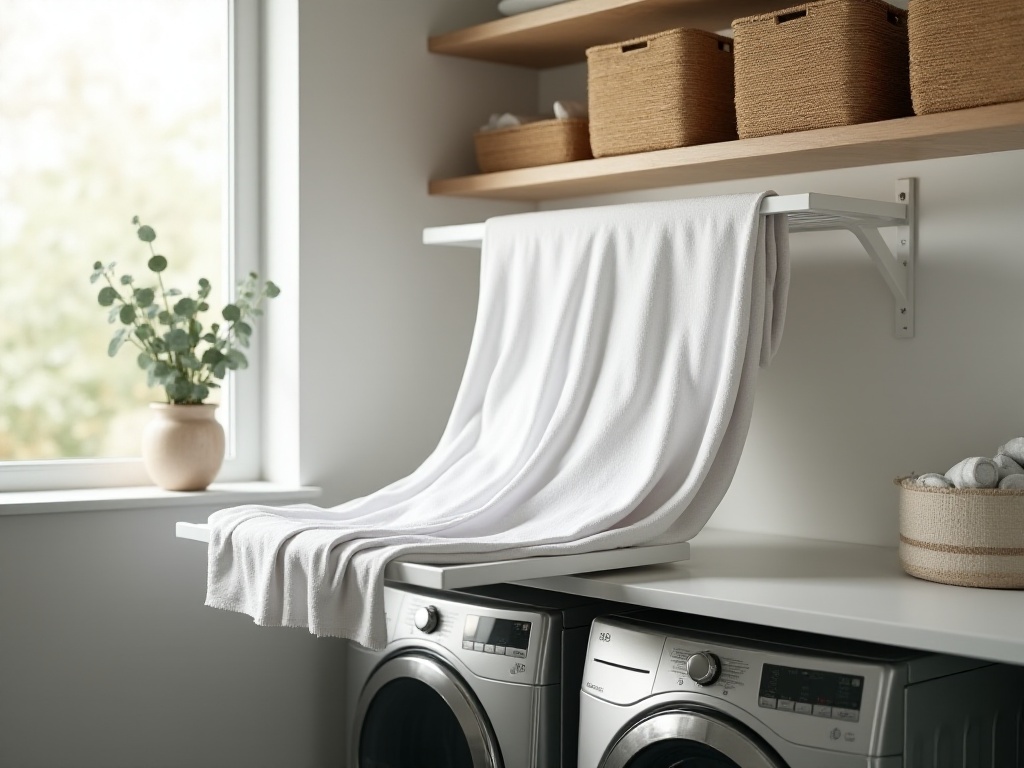
Innovative Solutions
Having good storage space isn't enough; storage methods are also important. Through continuous exploration, I found many storage solutions that are both practical and creative.
At the entrance, I placed several rattan baskets of different sizes. The largest one is for shopping bags and deliveries, the medium-sized one for keys and change, and the smallest specifically for temporary items I need to take with me. These baskets are not only practical but also match my home decor style, looking like intentionally placed decorative pieces.
To easily identify different storage boxes, I labeled them all. This idea came from my experience of searching for medicine while having a fever at night. At that time, I had to search through all drawers to find fever medication, which felt terrible. With labels, finding things became much easier, and it also encourages me to put things back in their proper place.
I also chose transparent materials for all storage boxes. This way, I can see what's inside without opening them, which is especially convenient when looking for small items. Another advantage of transparent storage boxes is that they let me visually assess whether I have too many of certain items and need to declutter.
In the closet, I used vacuum compression bags to store seasonal clothing. These compression bags not only protect clothes from dust and moisture but also save a lot of space. I remember being amazed the first time I used compression bags for winter down jackets - clothes that originally took up half the closet now only needed one drawer's space.
Continuous Optimization
Storage isn't something you achieve all at once; it's a process that requires constant adjustment and optimization. I take time each month to check the storage status of different areas and see what needs improvement.
For example, when I noticed I was always having trouble finding seasonings in the kitchen, I bought a rotating storage rack. This rack can rotate 360 degrees, making all seasonings visible at once and very convenient to use. No more searching everywhere while cooking, which has greatly improved efficiency.
Bathroom storage also underwent continuous optimization. I initially used ordinary storage racks but later found that water often remained on them, potentially breeding bacteria. So I switched to a rack with drainage function, eliminating hygiene concerns.
Bedroom clothing storage also kept improving. I observed that I regularly wear only a few pieces of clothing, so I placed them in the most accessible positions. Less frequently worn clothes can go in less convenient places, saving time while keeping the closet tidy.
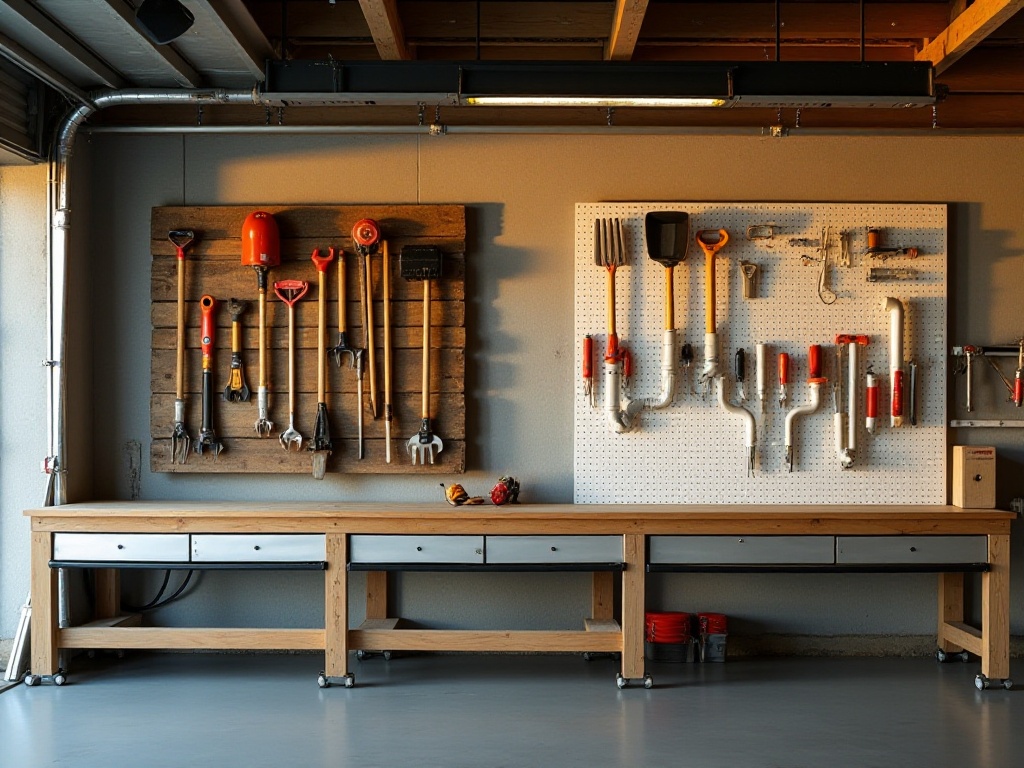
Experience Summary
After six months of exploration and practice, I've developed a storage system that works for me. First, space utilization must be strategic, especially in using vertical space. Second, item zoning must be logical, with everything having a fixed place. Third, good storage habits must be cultivated, maintaining daily organization. Finally, storage solutions must be continuously optimized, identifying and improving problems promptly.
These experiences might seem simple, but they require great patience and persistence to implement. However, when you see your originally messy home become neat and orderly, when you can easily find everything you need, when you feel comfortable and relaxed every time you return home, you'll realize it's all worth it.
Storage isn't the endpoint; it's the beginning of an easier life. Through proper storage, we can not only make our living space more comfortable but also make life more orderly and efficient. This might be the true meaning of "storage changes life."



